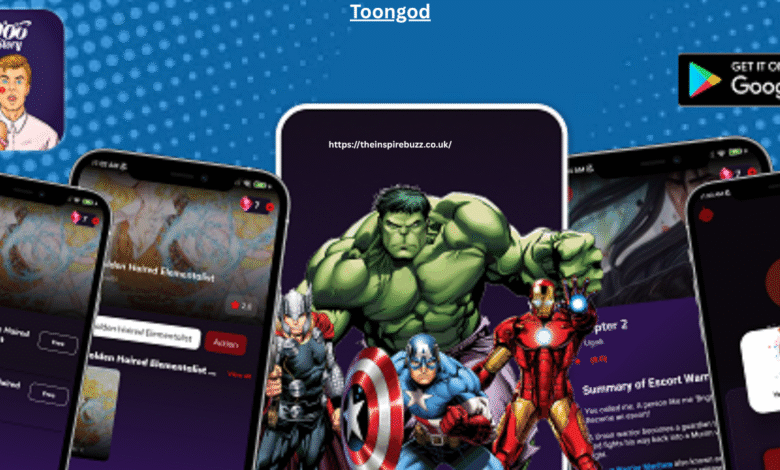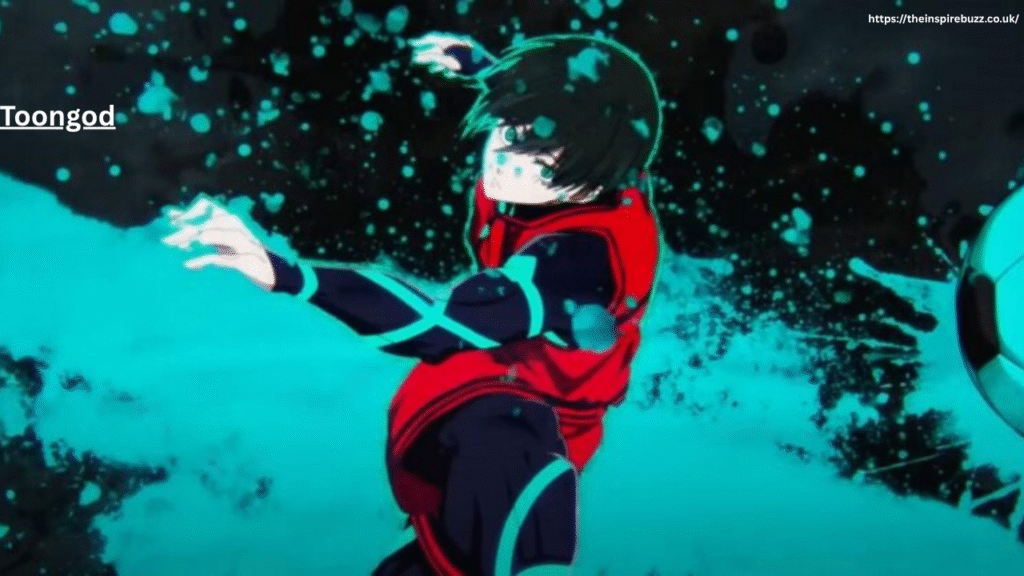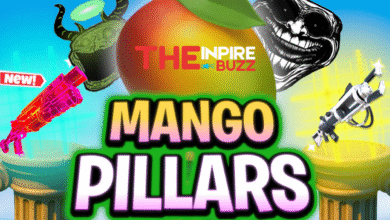Toongod Unraveling the Urban Legend, Its Origins, and Cultural Footprint

Toongod is an enigmatic term that has emerged from the depths of internet culture—its meaning shrouded in speculation and playful mystery. At first glance, toongod conjures the image of a cartoonish deity, a mash-up of “toon” (short for cartoon) and “god,” suggesting a character that blends humor with mystique. Yet, it’s precisely this ambiguity that has helped the phenomenon flourish online, captivating the imaginations of forum dwellers, meme-lovers, and creative subcultures alike.
In an age where digital folklore spreads at lightning speed, toongod stands out as an example of modern myth-making. This article explores the origins of the term, how it evolved across platforms, what makes it so appealing to communities, and the cultural footprints it has left behind. Whether you’re a curious onlooker, a fan-creator, or someone studying internet phenomena, the layers of toongod reflect broader truths about our digital age—how meaning gets built in virtual spaces, how communities coalesce around shared inside jokes, and how mythologies old and new keep evolving.
Along the way, we’ll examine how internet subcultures have transformed toongod from a cryptic reference into fan art, memes, and digital folklore. We’ll dive into discussions about where it first appeared, how creators have riffed on it, and whether it’s just a fleeting trend or something that might become a lasting piece of meme-legend. Let’s unravel the lore of toongod and explore what it teaches us about myth-making in the Information Age.
Origins and Etymology
First Appearances

Peeling back the first known mentions of toongod is akin to tracking down a ghost in the vast labyrinth of internet forums. Early references seem scattered across niche corners of Reddit, 4chan threads, and indie fan communities circa the late 2010s. While no single “first appearance” has been universally accepted, the term appears to have emerged in a semi-joking context—a satirical, tongue-in-cheek notion of elevating cartoons or mascots to divine status. Over time, what may have started as absurd humor gained traction among creative users, who began producing illustrations, stories, or edits featuring this cartoonaceous divinity.
Digging further, some trace its birth to a single post on an obscure art forum where someone whimsically declared, “All hail toongod,” accompanied by a crudely drawn character. From there, it lurched into Reddit comment threads and Discord channels where meme-makers seized on the phrase. The shift from joke to cultural meme underscores how online culture can breathe new life into offhanded remarks—turning them into recurring motifs that spread far beyond their point of origin.
Name Breakdown (“toon” + “god”)
The etymology of “toongod” is deceptively simple yet rich with interpretive potential. The “toon” prefix immediately evokes cartoons—animated characters, exaggerated expressions, and playful absurdity. It’s an invitation to embrace whimsy, nostalgia, and creative distortion. The “god” suffix, by contrast, introduces a humorous degree of grandeur or reverence, as if the comedic or visual flair of cartoons deserves a deity-like status in the minds of fans. Combined, the term suggests both parody and elevation: a mocking tribute to something inherently unserious, cast in divine light.
This contrast—the playful vs. the exalted—is what gives “toongod” its piquant appeal. It’s both tongue-in-cheek and oddly sincere. By calling something a “god,” even in jest, you signal that the subject has a special place in your cultural lexicon. Perhaps it’s reminiscent of clown gods or trickster figures in folklore—but remixed for the meme era, where irony and fandom often collide to produce in-jokes that feel simultaneously sacred and absurd.
Cultural or Linguistic Roots
Though “toongod” doesn’t appear tied to any traditional myth or linguistic heritage, it reflects a broader pattern: blending modern culture with parody-laden worship. Internet culture loves mock-deification—think of “based god,” “Harlem Shake gods,” or other playful odes to cultural phenomena. It’s a way to elevate pop culture into reverence through humor. In that sense, toongod follows in a lineage of meme-constructed mythologies, where the blending of language (“toon” + “god”) transcends literal meaning to become community-coded shorthand.
Moreover, the concept connects with the universal human impulse to mythologize the beloved or bizarre. Across cultures, emphasising the extraordinary—including cartoons—as objects of playful worship fits into a pattern of modern secular rituals. What’s different here is that the ritual unfolds in meme form, in Discord threads, digital art spaces, or quickfire repost culture. The word “toongod” becomes a cameo of internet folklore: part worship, part parody, part inside joke—a linguistic artifact of our digital age.
Evolution of the Myth/Character
Spread Across Platforms
Once seeded, toongod’s growth across social media and creative platforms illustrates how quickly niche memes propagate. Reddit users hijacked the term to create memes—sometimes simply images of toongod with exaggerated expressions and captions praising its absurd divinity. Discord servers dedicated to artistic experimentation produced drawings, animated GIFs, and even collaged comic panels featuring divine cartoon cousins of Garfield or static pixel mascots.
On TikTok and Instagram, audio memes evolved with background music and animations—repeating clips of drawings with text overlays like “Bow before the toongod.” Fan artists shared interpretations on Tumblr and Twitter, tweaking aesthetics from retro cartoon styles to neon vaporwave. In each iteration, the core idea remained: a whimsical, self-aware homage to animated absurdity, elevated to divine parody.
Variations and Sub-versions
No meme survives unaltered. Variations of toongod popped up, each with its own creative spin. Some versions depicted toongod as a benevolent protector of nostalgia—cartoon characters congregated around its glowing form—or as a mischievous trickster embodying absurdist humor. Parodies extended into “dark toongod” versions, drawn in horror or glitch art styles, leaning into uncanny or Creepypasta aesthetics.
These offshoots showcase the meme’s flexibility: you can frame toongod as wholesome, surreal, or unsettling. Memetic mutations kept the concept fresh—adding extra eyes, turning it into a puppet-theater deity, or even inserting popular cartoons like SpongeBob or Sonic into pantheon-style illustrations. Each variation signaled the community’s creative adaptability and ability to remake a meme to suit new contexts or humor trends.
Themes and Symbolism
At its heart, toongod taps into themes of nostalgia, parody, and ironic reverence. Cartoon characters often symbolize childhood innocence. By elevating them into divine parody, creators bridge nostalgia with the absurd. The humor arises from the tension between sincerity (“toongod is holy”) and ridiculousness (“it’s just a cartoon”). This duality resonates: we remember cartoons fondly, but we also laugh at their silliness, especially when they’re framed as mystical or divine.
Symbolically, toongod can represent the power of pop culture to feel sacrosanct without losing humor. In communities, deploying toongod imagery signals membership—if you get the joke, you’re in on the cult of cartoon reverence. It’s not a religious statement—it’s a playful, shared myth that brings people together in shared irony, nostalgia, and creative appreciation.
Cultural Impact and Community Reception
Memetic Popularity
Though toongod hasn’t hit mainstream headlines, it thrives within niche circles—memetic devotees, digital artists, self-aware humor communities. One Reddit thread with hundreds of upvotes simply asked, “Who’s your favorite toongod? Post pics.” The prompt generated dozens of creative responses, each embodying the meme’s playful irreverence. In the right subcommunities, “toongod” became shorthand—a reaction image, a drawing prompt, or a playful sign-off to a thread.
Part of the popularity lies in its in-joke simplicity. No deep lore needed—just call your favorite cartoon “toongod” and riff. That flexibility made it a handy cultural shorthand for content creators and meme-lovers. Over time, toongod references quietly nested into the fabric of certain meme communities, keeping it alive through repetition and remix.
Community Engagement
Engagement isn’t limited to casual memes. Some fan artists built digital portfolios around toongod variations, selling prints on platforms like Etsy. Discord servers hosted art challenges like “draw your version of toongod” or “toongod in horror style,” leading to collaborative lore-building. Users even played with lore—debating whether toongod is celestial or demonic, cartoon deity or glitch entity.
These creative rituals strengthened community ties. When multiple users riff on a shared joke, the joke cements group identity. Toongod’s appeal lies not in mass popularity but in shared creativity—one artist’s toongod sketch inspires another’s, building a chain of playful homage.
Criticism and Controversy
As with any meme, saturation breeds fatigue. Some users grew tired of seeing “toongod” slapped on every cartoon, arguing it was overused or lacked meaningful creativity. Criticism skewed mild—mostly “this meme is tired” gripes—not controversy. Others warned of derivative ideas drowning out novelty: “Every drawing’s just toongod again?” the comment read. But even critique feeds culture—sparking meta-jokes or “unexpected toongod” memes which breathe fresh humor.
Overall, toongod remains largely benign—even critics acknowledge there’s something endearingly absurd about its persistence. After all, elevating cartoons to divine parody isn’t harmful—it’s just another playful riff in the ever-churning meme machine.
Conclusion
Toongod stands as a fascinating testament to modern internet folklore—a cultural artifact born from a mischievous phrase and layered with parody, nostalgia, and creative adaptability. Its origin may lie in a casual joke, but its evolution highlights how virtual communities invent mythologies, cohere around inside jokes, and push creative expression in unexpected directions. From forums to art platforms, from meme threads to fan challenges, toongod illustrates how a quirky concept can become both a cultural shorthand and a shared playground.
Ultimately, toongod is less about deity and more about shared delight—an emblem of the inventive, communal spirit embedded in online subcultures. It speaks to how we mythologize the trivial, how humor becomes myth, and how communities form around playful belief in the absurd. Whether toongod fades into the background or finds new life with the next meme cycle, its legacy offers insight: that our digital age invents new folklore in real time—and in memes, we find our modern rituals, heroes, and gods, one joke at a time.
Frequently Asked Questions (FAQs)
What exactly is “toongod”?
A humorous, internet-born meme combining “toon” (cartoon) and “god,” used to playfully elevate animated characters to divine parody status.
Where did “toongod” first appear?
It likely originated in late-2010s online forums and meme communities—Reddit threads, Discord chats, or art platforms—where someone jokingly referred to a cartoon figure as “toongod.”
Is “toongod” based on any real myth or character?
No—it’s a modern invention without ties to folklore. It reflects meme culture’s playful take on idolizing pop culture with tongue-in-cheek reverence.
Why did “toongod” become popular?
Its simplicity, flexibility, and retro-nostalgic appeal made it easy to adopt. It became a go-to for cartoon-themed memes, drawings, and inside jokes.
Can I make or sell my own toongod creations?
Yes—many fan artists create and sell toongod prints or art. Legally, it’s ambiguity: so long as you don’t infringe on others’ copyright, parody-style creations are generally safe.



